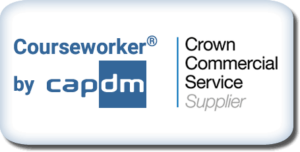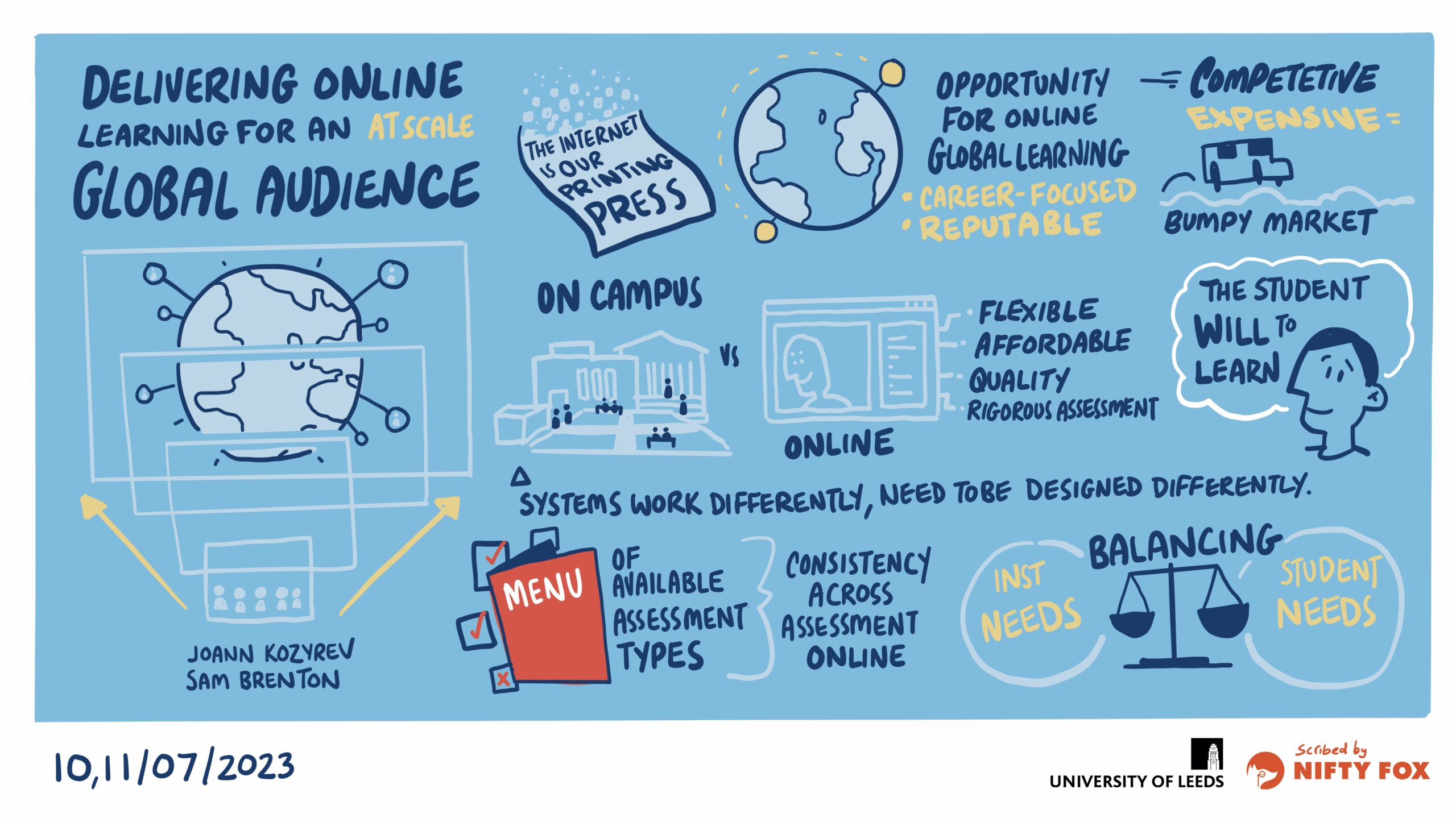In July 2023 the University of Leeds hosted an online learning summit which brought together experts from across the world to examine key challenges and opportunities. This series highlights some of those issues and explores how investment in structured semantic learning content can be part of the solution.
One of the sessions at #OLS23 that I was most excited about was Sam Brenton from the University of London talking about delivering online learning at scale for a global audience. Partly that’s because the engineering of large-scale learning programmes has been CAPDM’s bread and butter for the last quarter of a century and I knew his insights would be invaluable. But it was also because two of the largest global programmes delivered by the University of London Worldwide were built and are still run using structured semantic learning techniques.
Of course the session was much broader than a focus on the educational technology, platforms and learning design with which CAPDM is engaged. We talked about the challenges and opportunities of global online learning, from the bumpiness of the market, the high cost of global marketing, and strong competitions for UK universities, to the positives of having established and mature brands and reputations, the benefit of the global reach of the English language, and the “light weight” 3-year degree structure for undergraduate (in England) and 1 year for masters programmes.
And as was the case across many #OLS23 sessions, the regulatory environment and the internal institutional challenges for universities were referenced a lot. It’s remarkable to me, having been involved in the early days of the Edinburgh Business School at Heriot-Watt University in Edinburgh where Prof Keith Lumsden and others forged a path through the thickets of the regulatory environment and managed to deliver the world’s largest fully distance learning global MBA programme, that so many of the same obstacles seem to be in place for universities today, more than 30 years later.
Across multiple sessions at #OLS23 we heard about institutions struggling to get reasonable support for online learning modes of study and administration. Interestingly this was the case even in universities with an existing track record of online and distance learning programmes. Surely we should have learned the lessons from the successful pioneers like EBS by now and have policies in place in universities which enable schools and departments to implement online learning without facing unnecessary barriers? It does feel like a sea-change is necessary, not just from regulators but from university management teams, if UK institutions are to reap the rewards of online learning at scale.
Lower costs, bigger opportunities
Back on my “home turf”, learning design, production and delivery was of course also discussed at length, and Sam’s focus echoed CAPDM’s mantra over many years: the key is to keep your costs down without restricting the opportunities to deliver engaging, institutionally-specific and creative learning.
Universities need to be able to build really high-quality courses and programmes, do so efficiently and repeatedly to construct large-scale programmes, and enable within that framework the widest possible opportunities for different teaching and learning approaches while delivering a consistent student experience. Simple, right? Well actually…
Can structured semantic learning help?
CAPDM has been working with the University of London Worldwide (ULW) since 2015 to deliver high-quality at scale with a consistent student experience for a range of postgraduate courses. Central to that development is the use of structured semantic learning content which allows faculty to create consistent student learning, enables both tutors and students to monitor progress and assess against learning objectives, and facilitates scalable student support.
One approach which is very helpful when planning a large-scale structured semantic learning project is to build what we call the “course design onions” for a set of programmes. Essentially this defines the core template for a set of courses, and the trick is to build a design which ensures consistency of experience while also enabling creative variation between courses. For ULW the core of the onion is the learning objectives for the course, around which are wrapped fully-integrated publishers’ textbooks, carefully designed study guides, consistent summative and formative assessment including free-form reflective activities which build into a student portfolio, progress-tracking features, and a range of other elements some of which can be optional for different courses.
Key to this is that the design is driven by the pedagogical and institutional needs of ULW and its faculty, not by the features that appear in the VLE being used to deliver the online courses.
Structure and semantics driving success
With programmes of scale – tens of thousands of students worldwide – it’s critical that your content design enables good student data capture to keep tutors and student support staff informed and enable assistance to be deployed when necessary. Having all self-assessment questions mapped to one or more learning objectives, for example, means that student progress can be tracked more accurately than merely by completion of activities, and used well this can drive up student retention.
And the same embedding of metadata in content – the lifeblood of structured semantic learning – can also drive quality improvement processes in at-scale programmes. If a significant percentage of students, or a particular cohort, are struggling to progress on a specific set of learning objectives, that can be immediately seen, and content improvement or new learning elements can be inserted to address the identified need.
Structured semantic learning content really comes into its own when you are building online learning at scale. Its efficiency is unbeatable, and the success stories are out there. Let’s emulate them.
What do we mean by structured semantic learning content?
- Building and cherishing your learning materials consistently in a way which captures both structure and meaning.
- Creating learning independent of your current delivery environment, focusing on your pedagogy not your VLE’s features.
- Using efficient publishing techniques to enable your content to be delivered rapidly into your current VLE, your next VLE, in print and in a range of other formats.
- Cleanly and seamlessly combining your unique intellectual property with publishers’ textbook content as required.
- Courseworker by CAPDM is based on structured semantic learning content.



